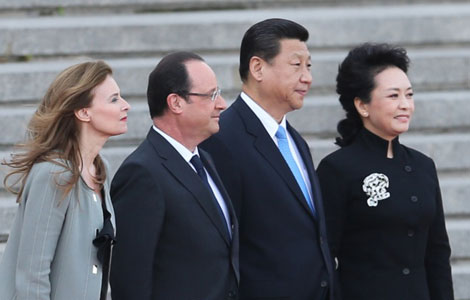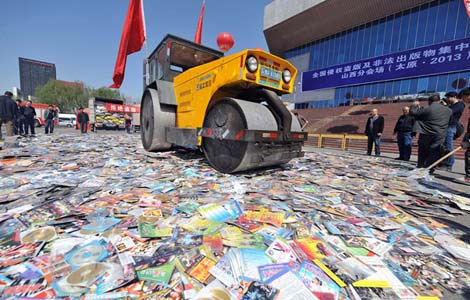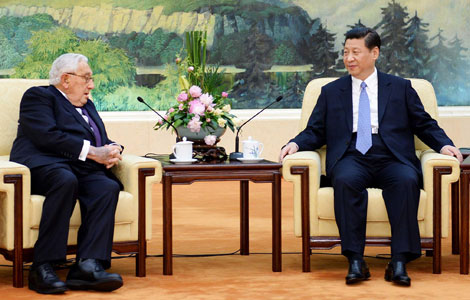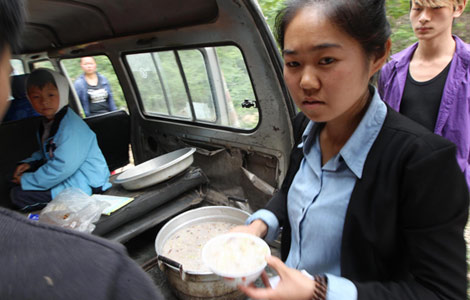Renowned painter donates collection to hometown gallery
Updated: 2013-04-26 08:07
By Wang Qian (China Daily)
|
||||||||
An art gallery in Shandong recently acquired a wealth of paintings by Liu Kuo-Sung, a renowned painter who lives in Taiwan.
Opened at Shandong Provincial Museum on April 26, the gallery will permanently exhibit the masterpieces by the painter.
Known as "the father of modern ink painting", the 81-year-old donated a total of 81 masterpieces to the museum, creating the largest collection of his work in the world.
|
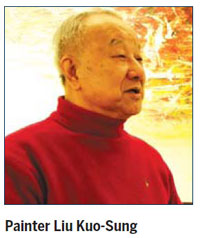 |
"I'm very glad that my work can be on display permanently at the largest museum of my hometown," said Liu, adding that another 19 pieces will be donated later.
An art fund worth 4 million yuan ($625,000) supported by Liu and the provincial government was launched at the same time to boost the development of modern ink painting.
Xie Zhixiu, director of the Shandong Cultural Relics Bureau, said Liu's works are valuable cultural treasures.
"People can review his art life through these works created at different periods," he added.
Xie said a research center will also be established to hold regular international seminars on Liu's artistic style and the development of modernist ink painting in China.
Born in 1932, Liu is a master in combing the traditional Chinese culture with modern elements.
In 1949, Liu moved to Taiwan and became a student of the Art Department of National Taiwan Normal University two years later.
At that time, he was trained in Chinese brush-and-ink and Western painting techniques.
After graduation, he founded the Fifth Moon Painting Society with his friends, which later became a key contemporary art society in Taiwan.
|
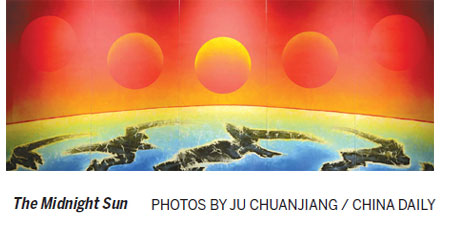 |
Since 1960s, Liu has been devoted to the innovation of the traditional Chinese ink painting and established a new approach which mixes tradition with Western arts.
Inspired by Western abstractionism, he discovered marbling techniques that give his work a special texture.
He even applies ink and color on a kind of coarse-fiber paper, which was invented by himself to create a white linear effect.
In 1968, Liu founded the Institute of Chinese Ink Painting, and his ink painting innovations were soon expanded to Taiwan, Hong Kong and the Chinese mainland.
His style later had profound influence in Asian countries like South Korea, Japan, Malaysia and Singapore.
To date, Liu has been invited by various galleries and museums across the world to hold solo exhibitions.
In 1981, Liu exhibited two ink masterpieces in Beijing to mark the establishment of the Chinese Painting Institute.
Two years later, he held an art show in the National Art Museum of China, the first of its kind by a Taiwan painter on the Chinese mainland.
In 1998, Liu was invited to an exhibition on Chinese art and civilization at the Guggenheim Museum in New York.
In 2007, the Palace Museum in Beijing staged a retrospective of his works.
His work has won a wide range of honors and is featured in the collections of 87 world-renowned art galleries and museums across the globe.
One of his masterpieces, Sun and Moon: Floating or Sinking, is now part of a precious collection at the British Museum. In 2011, he received the Lifetime Achievement Award of the Chinese Art and Literature Award from the Ministry of Culture in China."I have been aspiring toward change and innovation. I hope every painting of mine can give people a different feeling," he said.
Most Viewed
Editor's Picks
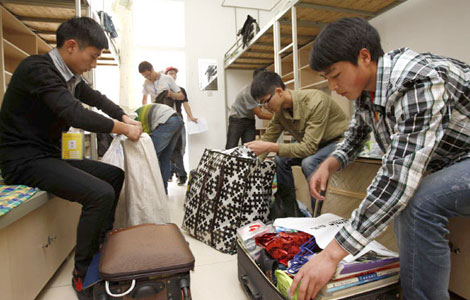
|

|

|

|

|

|
Today's Top News
Phone bookings for taxis in Beijing
Chinese consumers push US exports higher
Seoul delivers ultimatum to DPRK
Boston bombing suspects intended to attack NYC
No let up in home price rises
Bird-watchers undaunted by H7N9 virus
Onset of flood season adds to quake zone risks
Vice-president Li meets US diplomat
US Weekly

|

|
